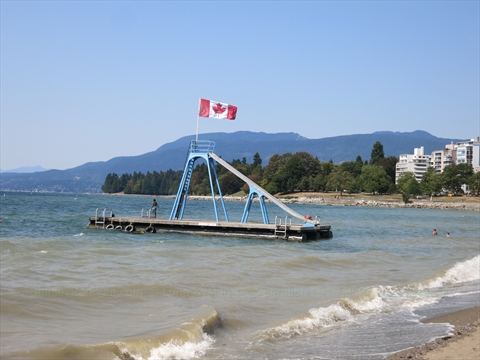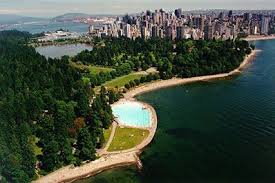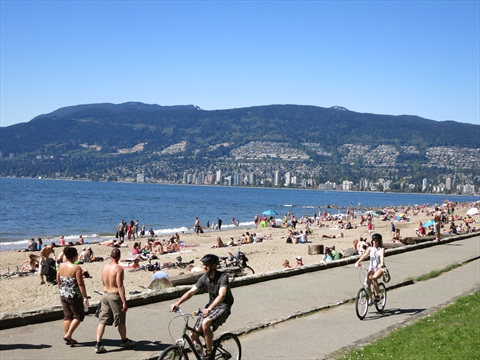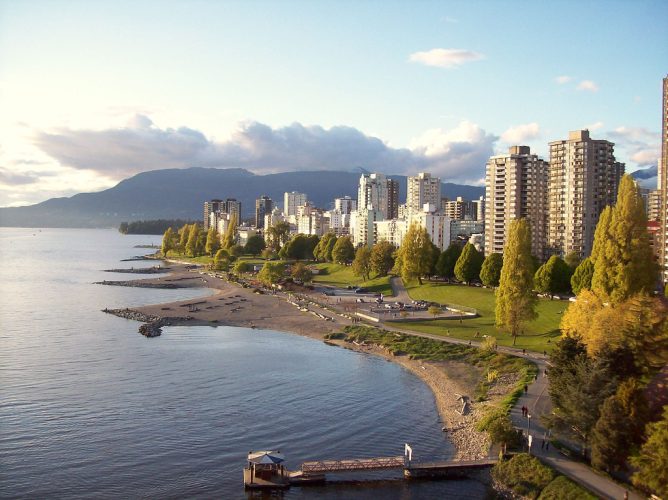A Coastal Gem with a Rich History
Introduction


Nestled in the heart of Vancouver’s vibrant West End, English Bay Beach—also known as First Beach—stands as one of the city’s most cherished coastal treasures. This picturesque stretch of white sand has been captivating both locals and visitors for well over a century with its stunning panoramic views of the North Shore mountains, Vancouver’s skyline, and the tranquil waters of Burrard Inlet. More than just a recreational spot, English Bay Beach represents a fascinating intersection of indigenous heritage, colonial development, and modern urban culture that continues to shape Vancouver’s identity as a coastal city.
Historical Insights
Long before European settlement, the lands surrounding English Bay were home to several Indigenous groups, including the Musqueam, Squamish, and Tsleil-Waututh peoples, who utilized the bay and its surrounding areas for sustenance and habitation for thousands of years. Their deep connection to this land established a foundation for what would later become one of Vancouver’s most popular beaches.
The beach underwent its first significant development in the 1890s when early Vancouver settlers moved into the area. Historical photographs reveal that the original beach was much larger than today’s, extending eastward from Denman Street to Burrard—approximately a half-mile of sand.
In 1906, civic officials created the English Bay Pier, topped by Joe Fortes’ Pavilion. Joe Fortes, affectionately known as “Old Black Joe,” became the bay’s first official lifeguard in 1897. Born in the West Indies, he arrived in Vancouver the day after the Great Fire in 1886 and worked various jobs before the Park Board appointed him as lifeguard. Fortes taught swimming to more than a generation of Vancouver children, and when he died in 1922, his funeral was attended by thousands, with pallbearers including the mayor and chief of police—a testament to his impact on the community.
Perhaps one of the beach’s most enduring legacies is the Polar Bear Swim, a tradition that has continued for over 100 years, drawing brave souls to plunge into the frigid waters every winter.
Popular Activities
- Swimming and Sunbathing: The beach’s clean waters and soft sand make it ideal for swimming during summer months and relaxing under the sun.
- Water Sports: Visitors enjoy kayaking, stand-up paddleboarding, and sailing in the protected waters of English Bay.
- Celebration of Light: This international fireworks competition held annually is the largest offshore fireworks display in the world, drawing massive crowds to the beach.
- Sunset Watching: English Bay Beach is renowned as one of the best places in Vancouver to watch spectacular sunsets over the Pacific Ocean.
- Seawall Activities: The Vancouver Seawall running alongside the beach attracts joggers, walkers, cyclists, and rollerbladers throughout the year.
Visitor Summary

Today, English Bay Beach represents the perfect blend of natural beauty and urban accessibility. For tourists, it offers an extraordinary vantage point to absorb Vancouver’s stunning geography—mountains meeting ocean against the backdrop of a modern cityscape. Many visitors are surprised to find such a pristine beach within walking distance of downtown hotels and restaurants.
For locals, the beach functions as an extension of their living space—a communal backyard where generations of Vancouverites have created memories. During summer evenings, the beach transforms into a community gathering place where people from all walks of life come to socialize, exercise, or simply relax while watching container ships anchored in the distance.
Directions
Public Transit: The easiest way to reach English Bay Beach is via bus routes #5, #6, or the #23, which all stop within a short walking distance of the beach. From downtown, it’s approximately a 10-minute bus ride.
Walking: From downtown Vancouver, walk west along Robson Street until you reach Denman Street, then turn left and continue until you reach Beach Avenue. The total walking time from downtown is approximately 20-30 minutes.
Cycling: Follow the dedicated bike lanes along Beach Avenue or take the Seaside Greenway route. Bike racks are available near the beach entrance.
Driving: Limited street parking is available along Beach Avenue and nearby streets. Pay parking lots can be found at the corner of Denman and Beach Avenue. On busy summer days, consider public transit as parking can be difficult to find.
English Bay Beach isn’t just a destination; it’s a living testament to Vancouver’s evolving relationship with its natural environment—where indigenous heritage, colonial history, and contemporary urban life converge along one of Canada’s most beautiful shorelines.

